The best handheld gaming PCs in 2025 are my favorite way to game on the go
The best handheld gaming PCs to take your gaming on the go
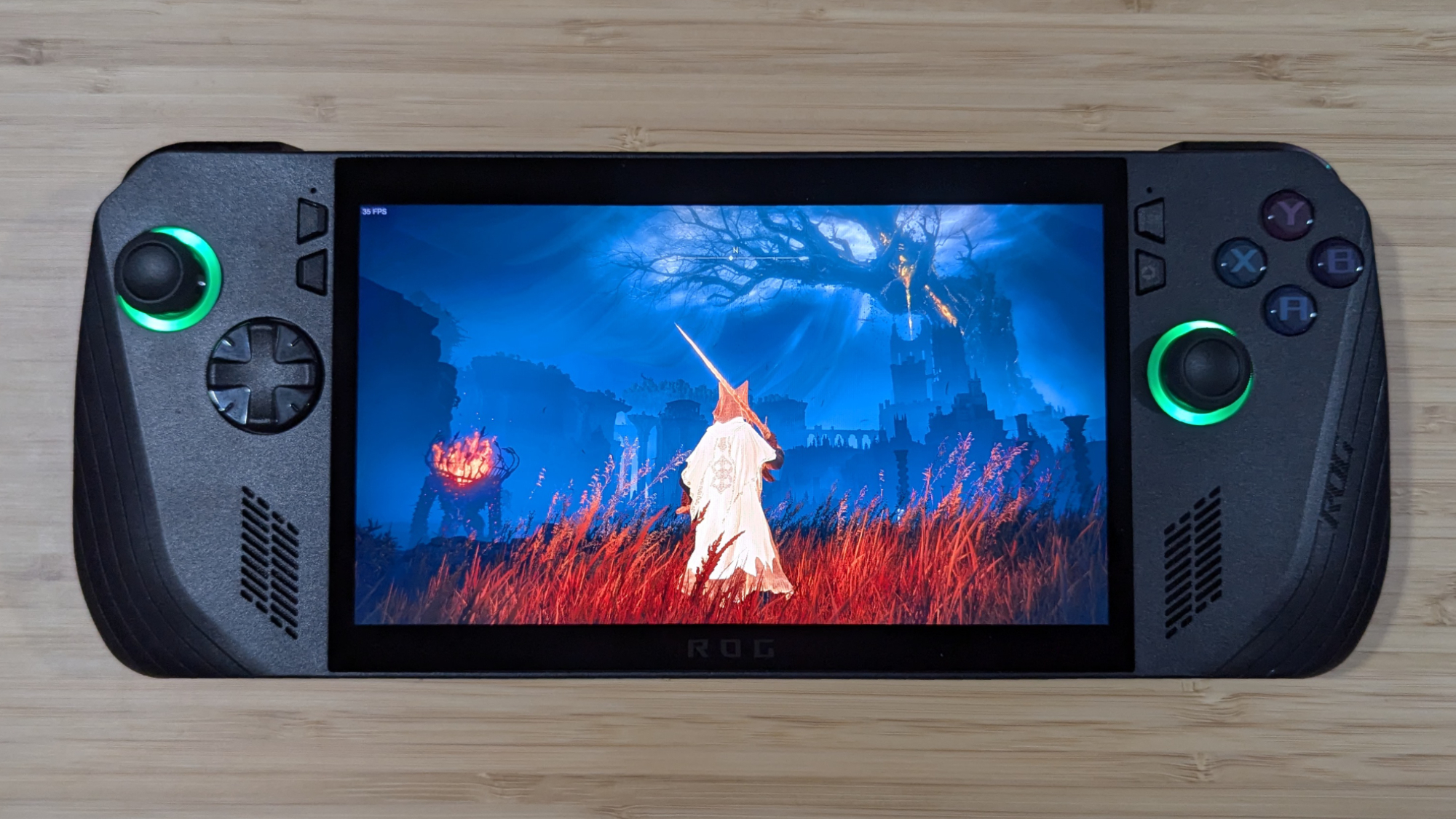
1. The list in brief ↴
2. Best overall
3. Best budget
4. Best battery life
5. Best screen
6. Best for emulation
7. Benchmark comparisons
8. How to find the right handheld
9. FAQs
10. How we test
11. Why trust Laptop Mag
I love gaming laptops, but nothing beats the best handheld gaming PCs when it comes to portability.
If you've ever wished you could play your PC games on your Switch, the best handheld gaming PCs are the solution. You get the broad game compatibility of a laptop or PC in the form factor of a handheld. They can also be a more affordable alternative to the best gaming laptops if you're on a tight budget or new to PC gaming.
Most handheld gaming PCs run on Windows 11, meaning you can play any Windows-compatible games. The exception is the Steam Deck, which uses SteamOS, Valve's custom version of Linux. So, if you're considering the Steam Deck or the upcoming Lenovo Legion Go S Steam Edition, it might be a good idea to check out the Proton database to see how well your favorite games will run on the Deck.
The Steam Deck may be the most widely known handheld gaming PC, but it's far from your only choice. Some phenomenal handhelds have launched over the past few years, including a handful of all-stars that made this list.
For example, the Asus ROG Ally X is our top pick thanks stunning performance in our review and a well-earned Editor's Choice award. This ultra-portable gaming powerhouse delivers great battery life, superb ergonomics, and a reasonable amount of storage for the price, making it a fantastic value for your money.
That's just the tip of the iceberg, though. Here's a look at the best handheld gaming PCs after dozens of hours of testing!
The Quick List
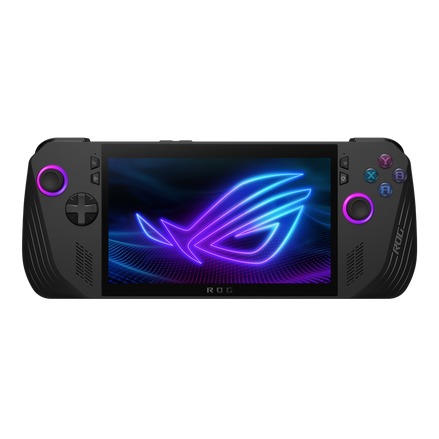
Best overall
The Asus ROG Ally X is a massive improvement over the original Ally, from its ergonomics and battery life to its additional RAM and Thunderbolt 4 port. And even though it's one of the more expensive on this list, it's still cheaper and better than budget gaming PCs.
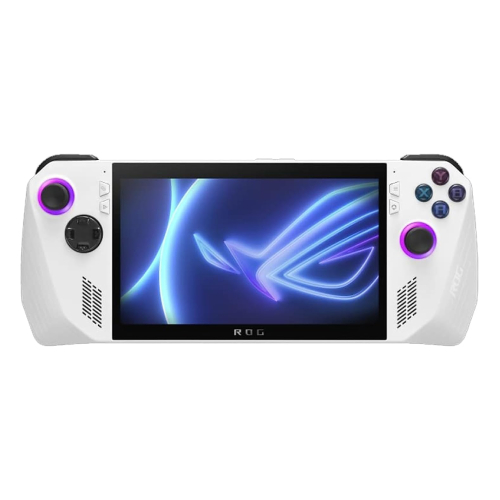
Best budget
The Asus ROG Ally is our favorite handheld gaming device for budget users. Its AMD Ryzen Z1 or Z1 Extrfeme processor, comfortable ergonomic grip, and convenient Armoury Crate app make it feel snappy and powerful all at once.
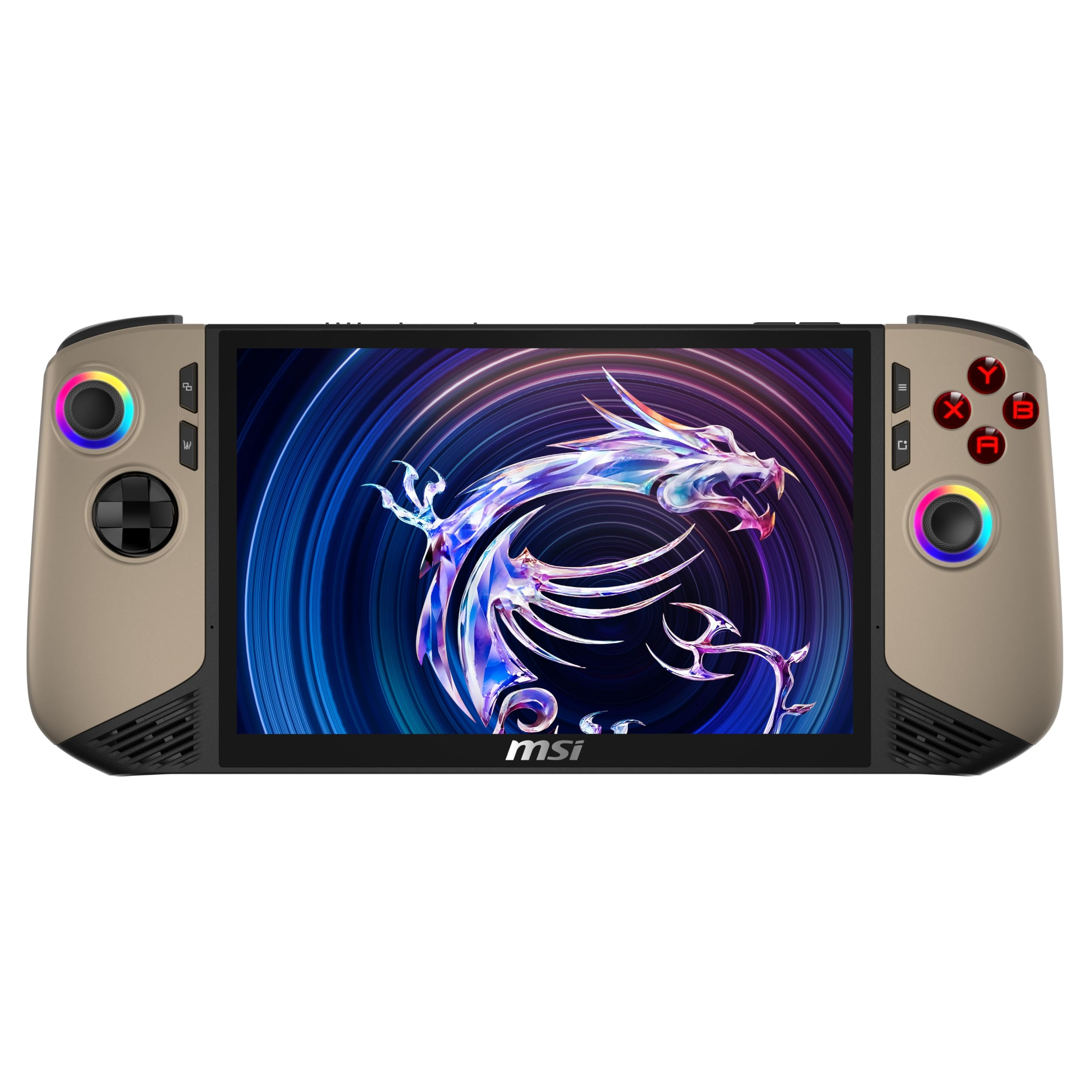
Best battery life
The MSI Claw 8 AI+ has fantastic non-gaming battery life, coming in at over 13 hours. And in our gaming tests, it lasted 3 hours before running out of juice, making it the longest lasting in this list. It's also has tons of storage, RAM, and a powerful iGPU.

Best screen
The Lenovo Legion Go is fantastic in many ways, but what it does better than its competitors is its 8.8-inch display, which is high resolution and yields a compelling color depth. If you want a large, beautiful display, buy the Legion Go.

Best for emulation
The Steam Deck is the original handheld gaming PC, being the first to make us realize just how awesome it can be. And the Steam Deck is still excellent for anyone who primarily uses Steam, or wants to have a great console for emulation.

Stevie Bonifield is a freelance tech journalist and lifelong gaming enthusiast covering everything from gaming laptops to handhelds to keyboards and accessories. After reviewing dozens of gaming devices for Laptop Mag, Stevie knows how to spot the laptops and handhelds that deliver the best gaming experience for your money.
The best handheld gaming PCs you can buy today
Why you can trust Laptop Mag
Whether you've heard whispers of the handheld gaming PC's brilliance and want to try it for yourself for the first time or are looking for an upgrade from whatever you were playing with prior, there are plenty of great options available for every budget and use case.
Best overall handheld gaming PC


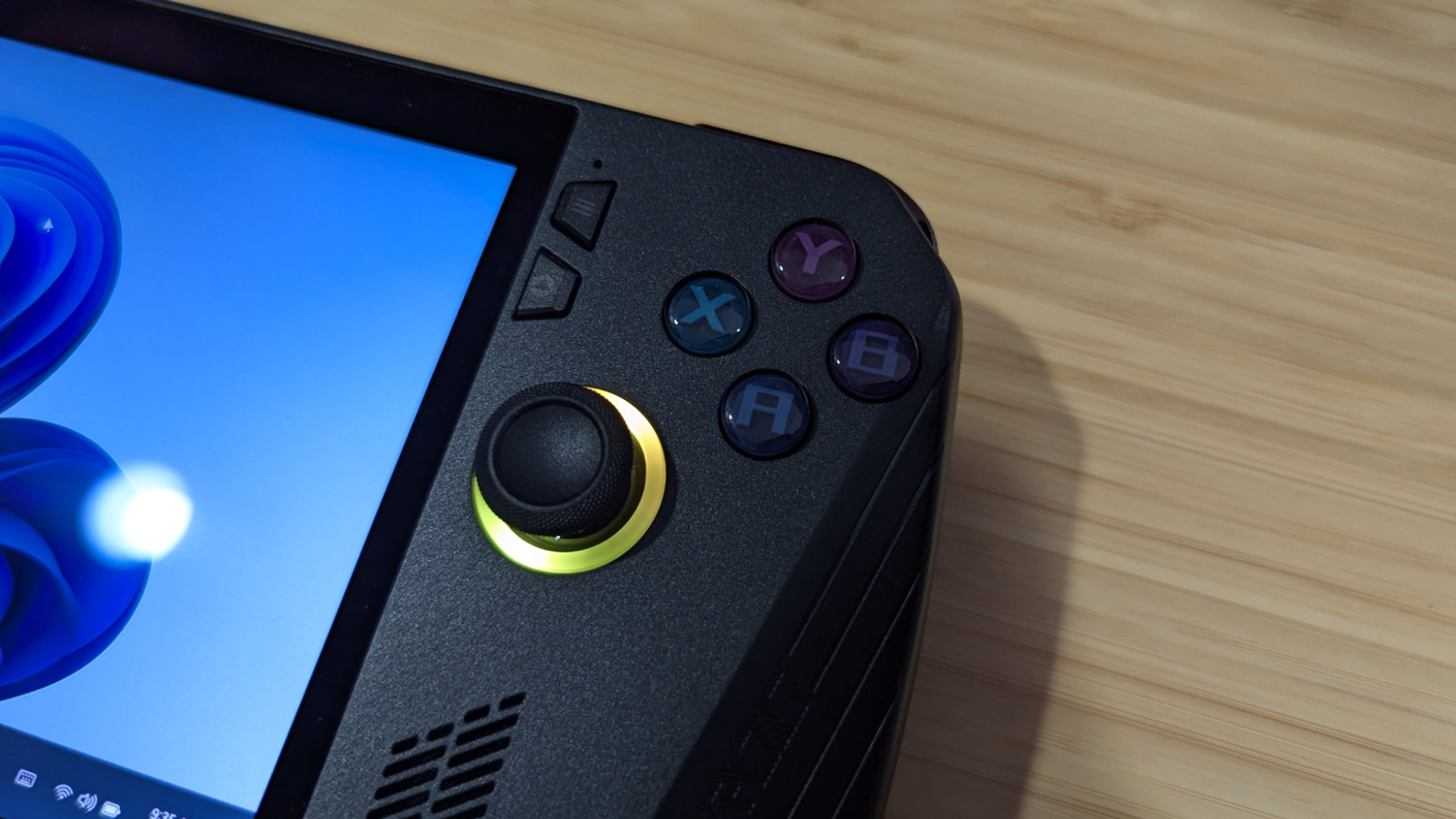
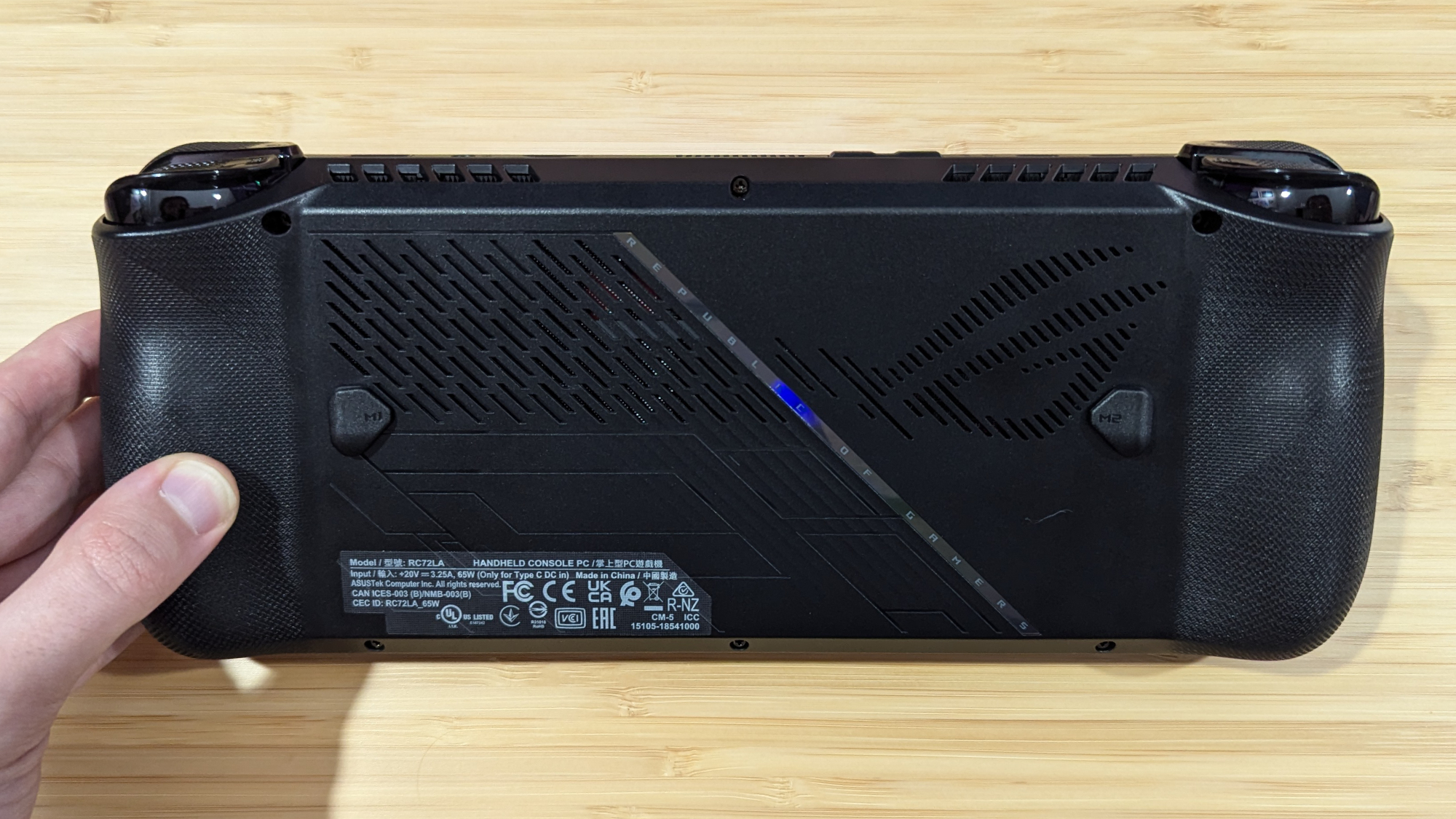
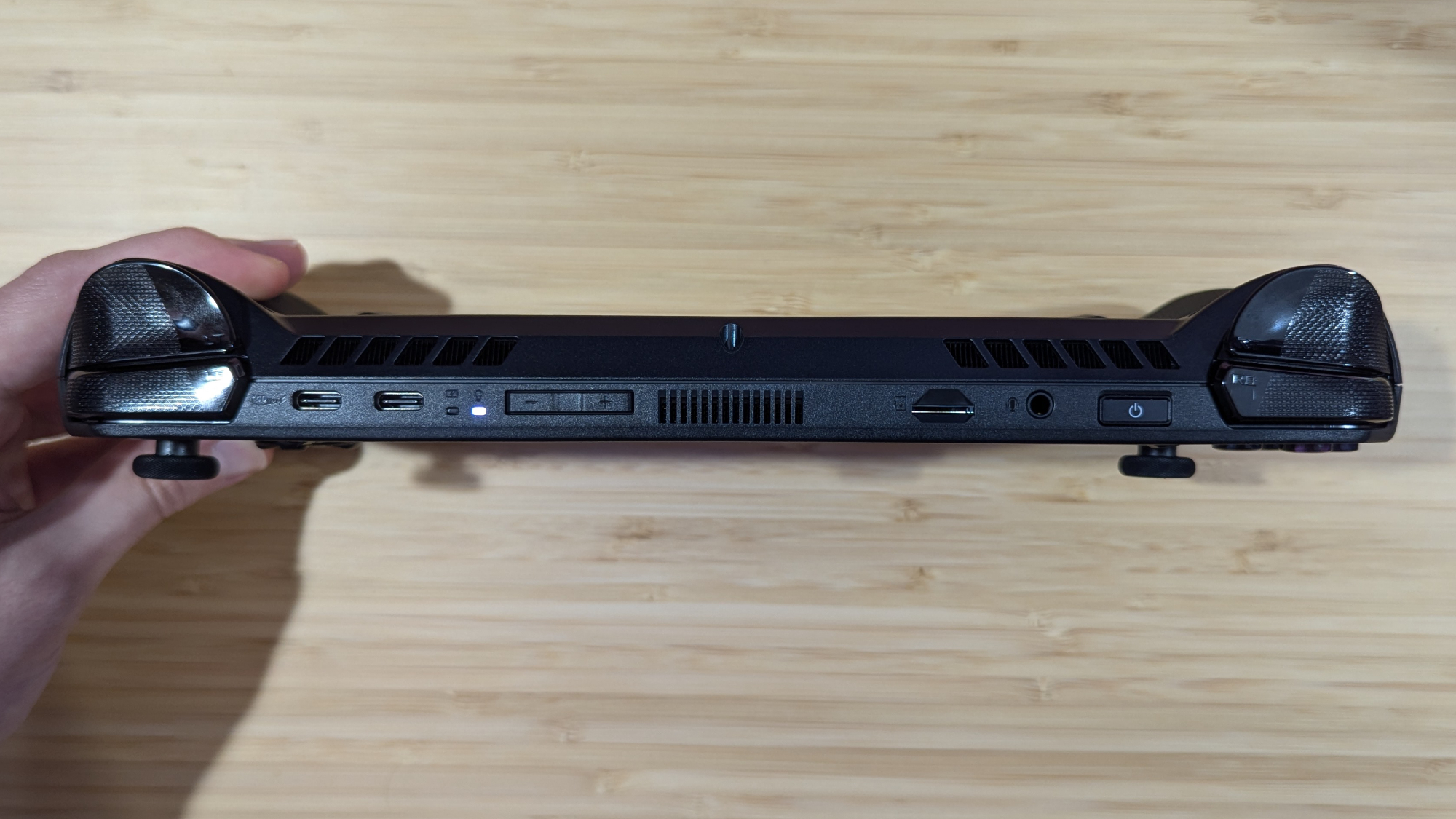
Specifications
Reasons to buy
Reasons to avoid
Asus ROG Ally X is an improved version of the Asus ROG Ally. It's more expensive but it offers a more ergonomic chassis and double the battery life. This is the handheld gaming PC to buy if you can afford it.
✔️ You want the best ergonomics for PC gaming: Gaming on the go is one thing, but gaming with a comfortable controller is an entirely different beast. This is the best of both worlds, offering satisfying new ergonomic features.
✔️ You want the most of gaming on the go: Another wild improvement to the Asus ROG Ally X is its battery life. With double the time, the Ally X lasts a good 3 hours and 4 minutes while gaming. That makes most work commutes infinitely more tolerable.
✖️ You want stronger performance: Yes, you get additional RAM with the Asus ROG Ally X, but the overall performance is no different than the Ally, as they feature the same APU.
✖️ You want to budget properly: While the Asus ROG Ally is a great cheap alternative, the Ally X is roughly double the price. It's harder to argue for if you're on a budget.
When it first launched, the Asus ROG Ally blew my mind, but it had problems. With the release of its mid-cycle refresh, Asus ROG Ally X, the company took the machine to a whole new level.
What's so different about the Asus ROG Ally X? Its ergonomics are significantly improved. There's a springiness to the bumpers and triggers, there's more tension in the joysticks, the grips are more comfortable, and the back buttons are better positioned.
The slight downside is that the machine is a tad heavier, with the original Ally coming in at 1.34 pounds versus the Ally X's 1.5 pounds, but if you can handle that extra weight, it feels great.
Beyond just that, the Ally X's longevity hits new levels with its 80Wh battery (the ROG Ally had a 40Wh battery). Jumping from Ally's 1 hour and 46 minutes to the Ally X's 3 hours and 4 minutes. Other updates include 24GB of RAM and a Thunderbolt 4 port, which increase performance and charging speeds.
The display is the same 7-inch, 1920 x 1080, 120Hz panel as the original, but it scored slightly higher marks. It hit an average of 523 nits of brightness (from 465 nits) and covered 80% of the DCI-P3 color gamut (from 76.1%).
It does feature the same performance, which is decent but a bit disappointing considering the price bump. Playing Elden Ring: Shadow of the Erdtree at maximum graphics with ray tracing turned all the way up produced anywhere from 27 to 35 frames per second.
As mentioned earlier, The Asus ROG Ally X is a bit chunkier, coming in at 1.5 pounds and 11 x 4.4 x 1~1.5 inches versus the Ally at 1.3 pounds and 11 x 4.4 x 0.8 inches. We also found that the D-pad is a little too close to the screen, which is a miss in terms of its revamped ergonomics. Even now, several months after launch, I still accidentally tap the screen while gaming, which registers a random input on the Ally X.
Overall, the Asus ROG Ally X is a great option for those who seek the best handheld gaming PC experience.
See our full Asus ROG Ally X review.
Best budget handheld gaming PC

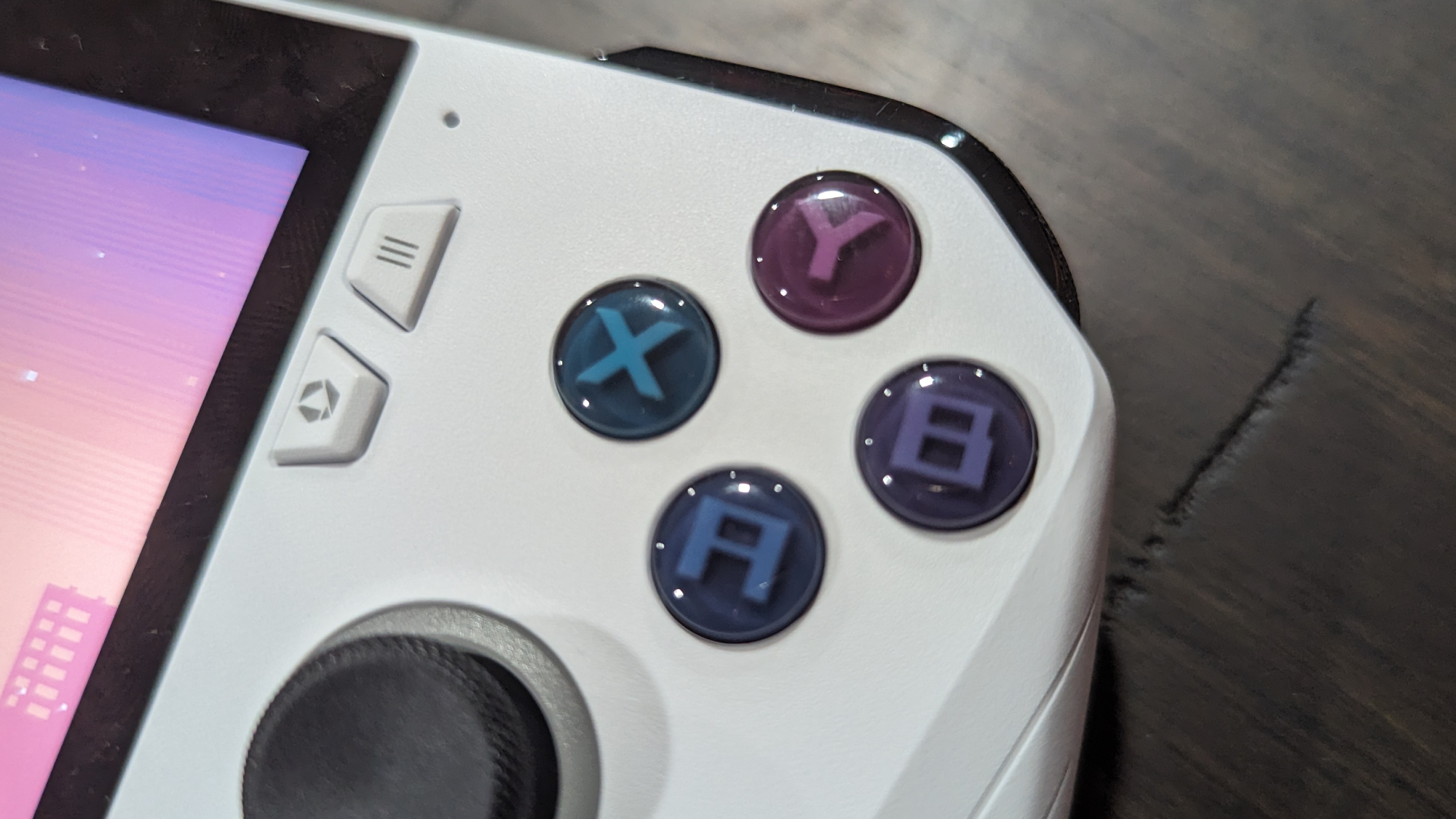
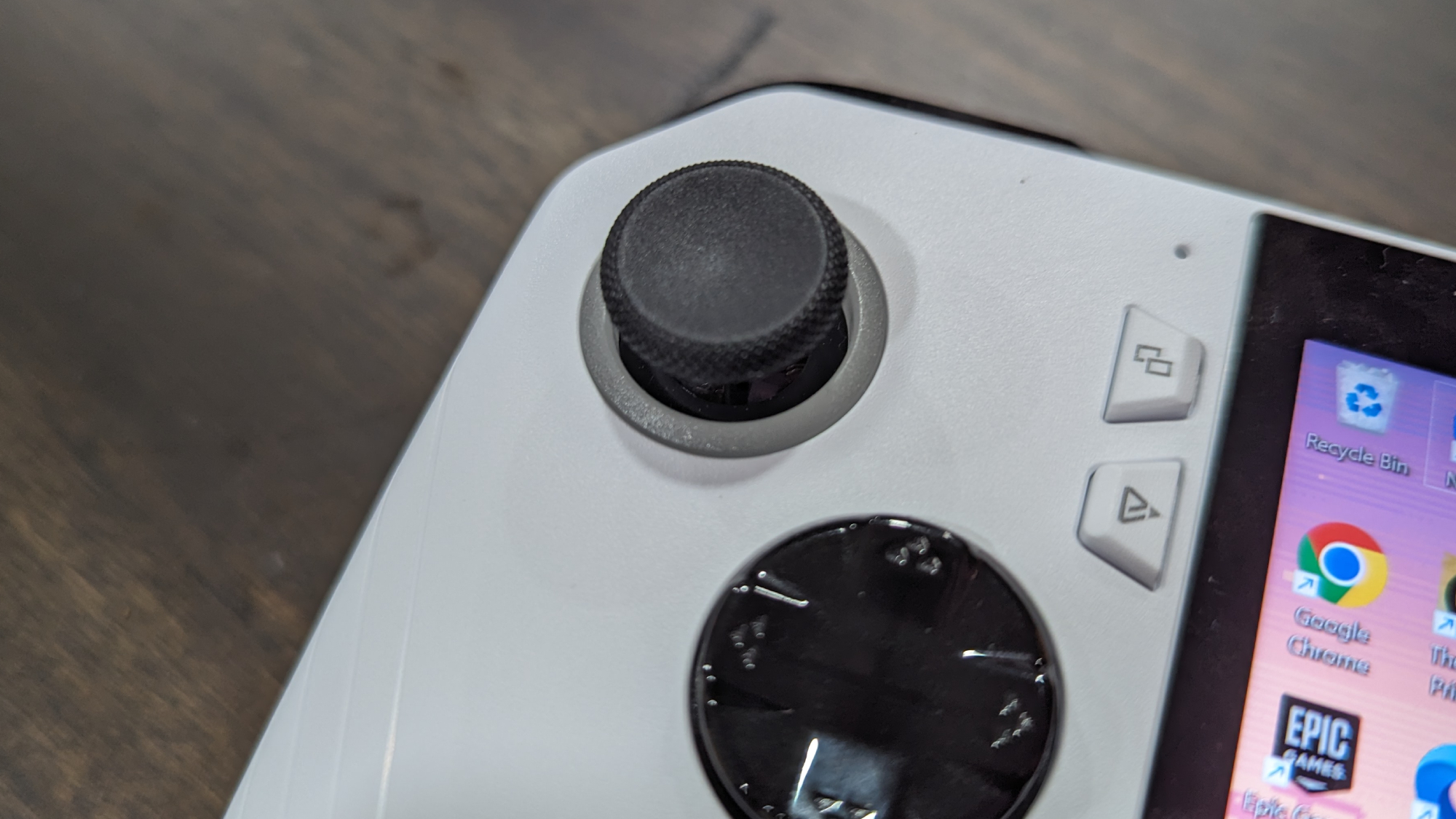

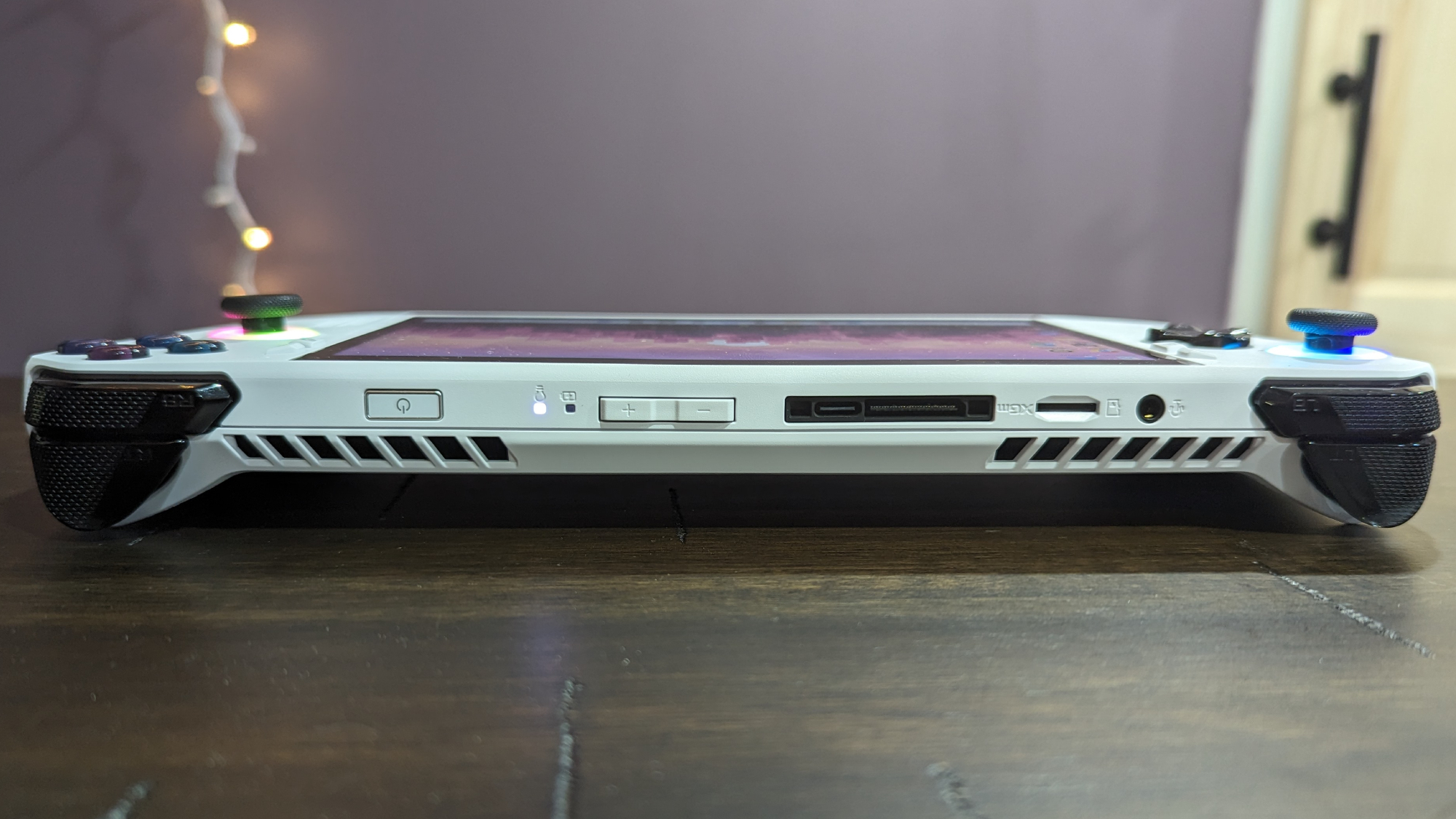
Specifications
Reasons to buy
Reasons to avoid
Asus ROG Ally was the one that started it all: It began my obsession with handheld gaming PCs, and if you want a cheap way to get into the hardware, this is absolutely your best bet at it's often discounted at $399 or less (for the Z1 model).
✔️ You want a light handheld: The original ROG Ally is the lightest of the handheld gaming PCs, coming in at only 1.3 pounds. If you're worried about weight, this is the one to get.
✔️ You want to save the most: Handheld gaming PCs are the most affordable gaming devices that you can buy right now, but the Ally surpasses all of its competitors in affordability, especially with the cheap Ryzen Z1 model.
✖️ You want strong performance: You won't be playing AAA games on the highest settings, especially with the Ryzen Z1 model. If you're only looking to play indie titles, this will do more than well enough for you. Otherwise, look elsewhere.
✖️ You cannot stand small storage: I loved my Ally, but one big issue I had with it related to its low storage. 512GB just wasn't enough for how many games I installed, so if you expect that to be a similar issue for you, try a different handheld.
The Asus ROG Ally is an excellent gateway into handheld gaming PCs that run Windows 11, as it's the cheapest of the bunch and allows you to enjoy a slew of indie titles without spending anywhere near as much as its competitors.
The 7-inch, 1920 x 1080p AMD FreeSync touch panel sports a 7-millisecond response rate with a 120Hz refresh rate. It averaged 465 nits of brightness, brighter than some premium gaming laptops.
As far as performance goes, you won't play games on high settings, so put that out of your mind. But considering the size, the Ally pushed hard on our testing. For example, with Assassin’s Creed Valhalla, the ROG Ally scored 29 fps at 1080p on High. Turn that to low, and you'll likely get over 60 fps.
Regarding portability, the ROG Ally weighs only 1.34 pounds and measures 11 x 4.4 x 0.8 inches. I frequently brought the machine while traveling, but it doesn't last that long in terms of longevity. You’re getting 1 hour and 46 minutes while consistently gaming, which is more than an hour shorter than what competitors like the Ally X and Claw 8 AI+ accomplish.
The Asus ROG Ally is a perfect entry point for handheld gaming PCs. It's affordable and capable, and unless you plan to shoot for the stars, it's more than worth your money.
See our full Asus ROG Ally review.
Best battery life in a handheld gaming PC
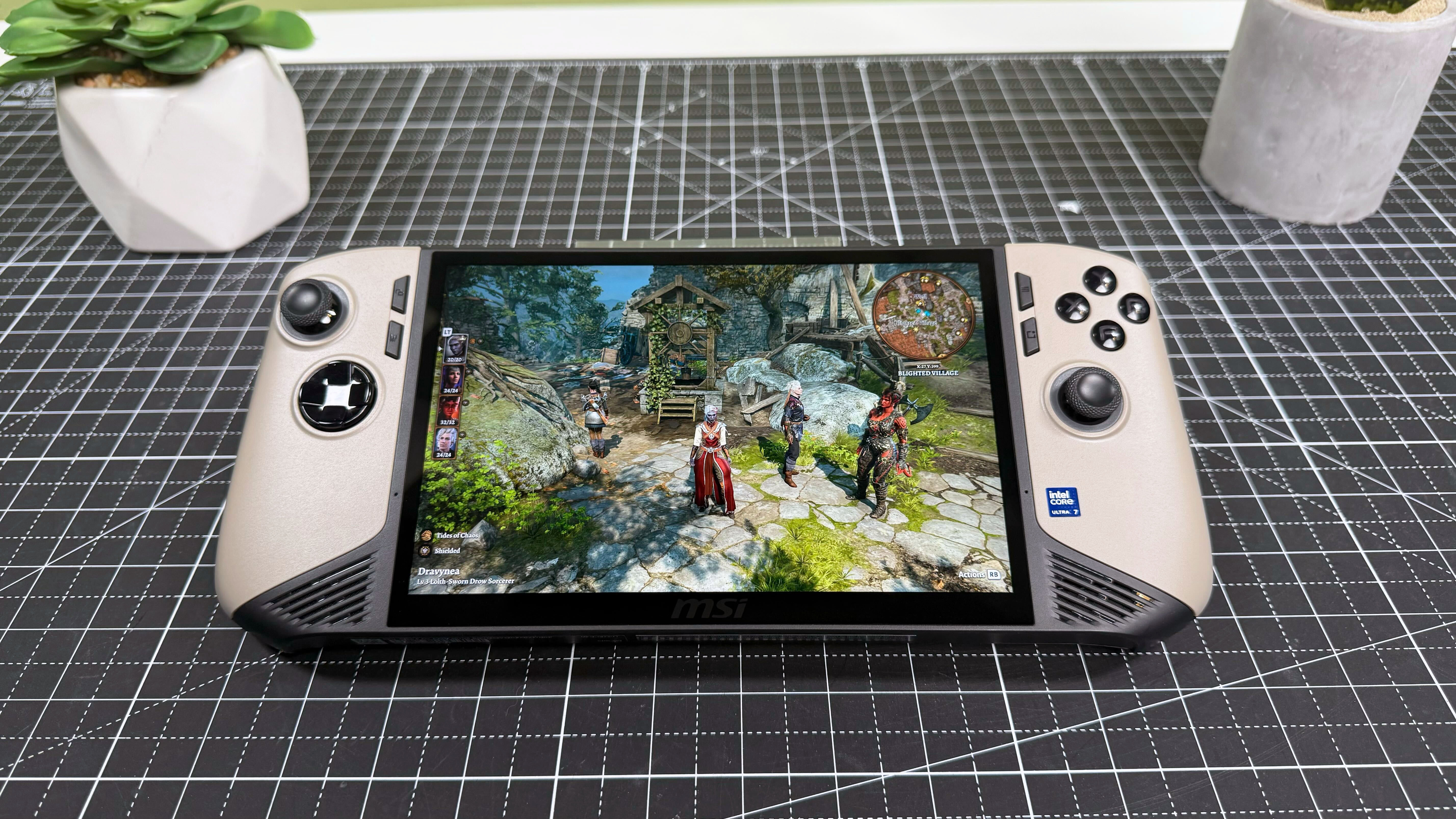
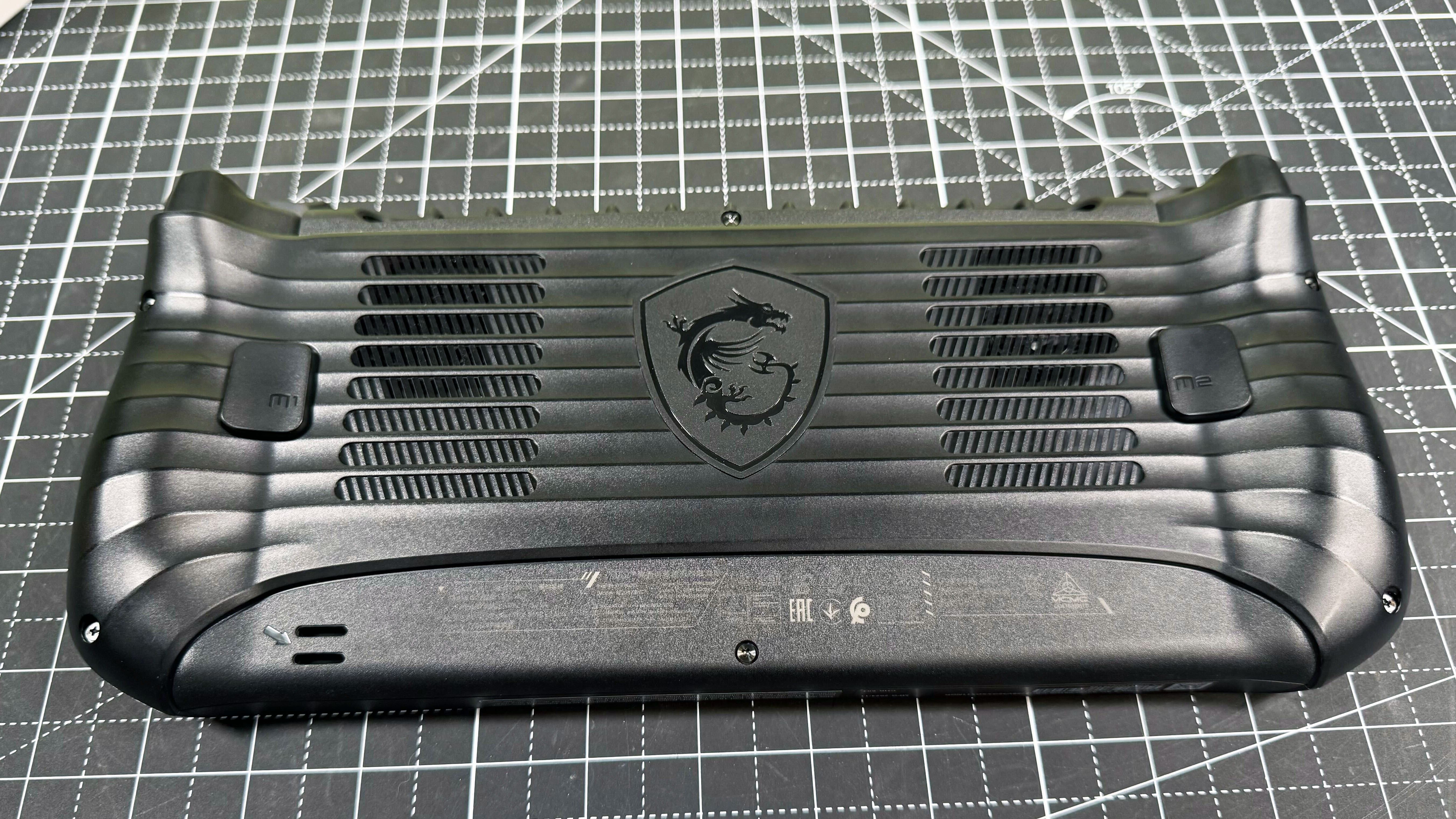
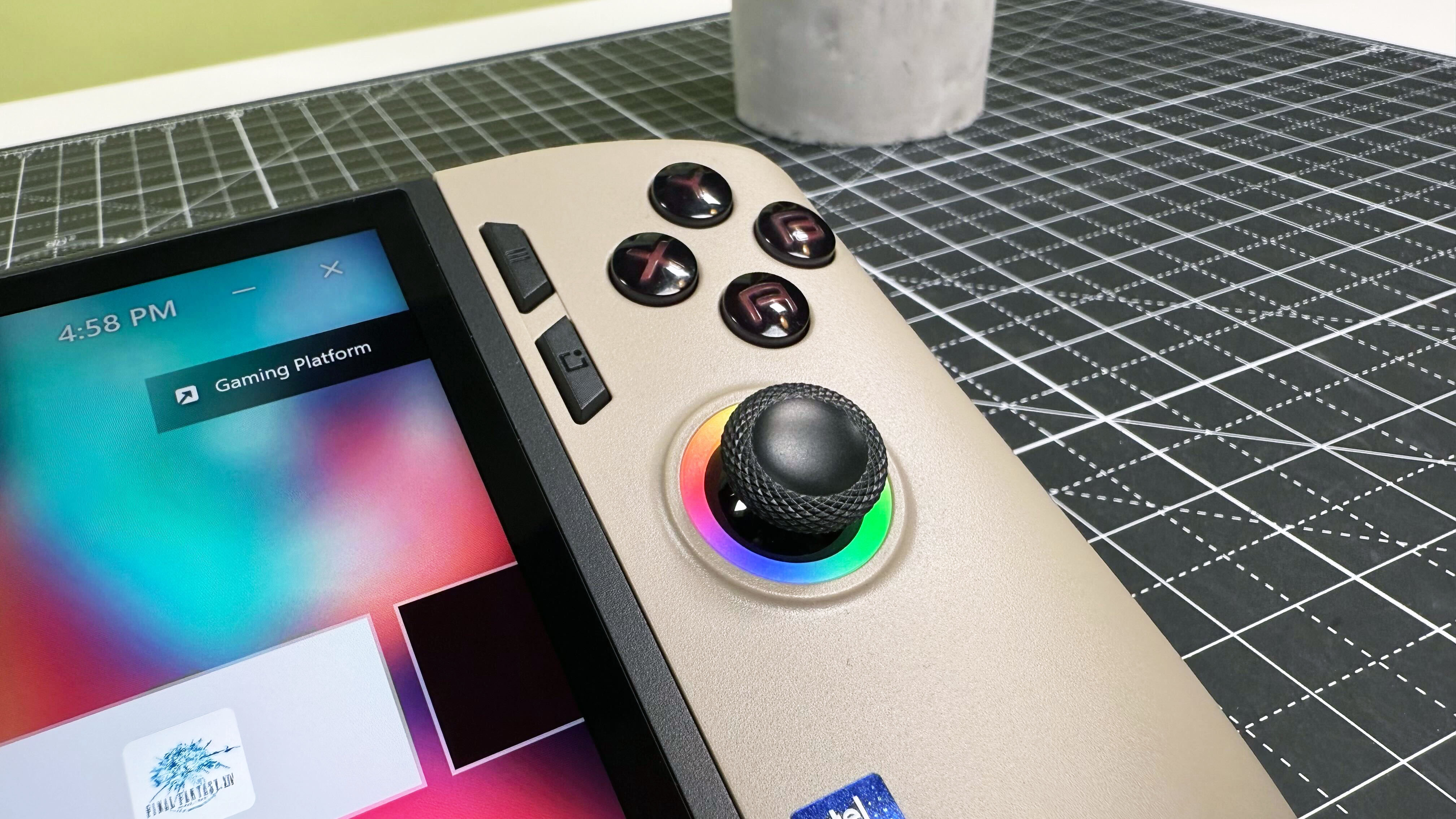

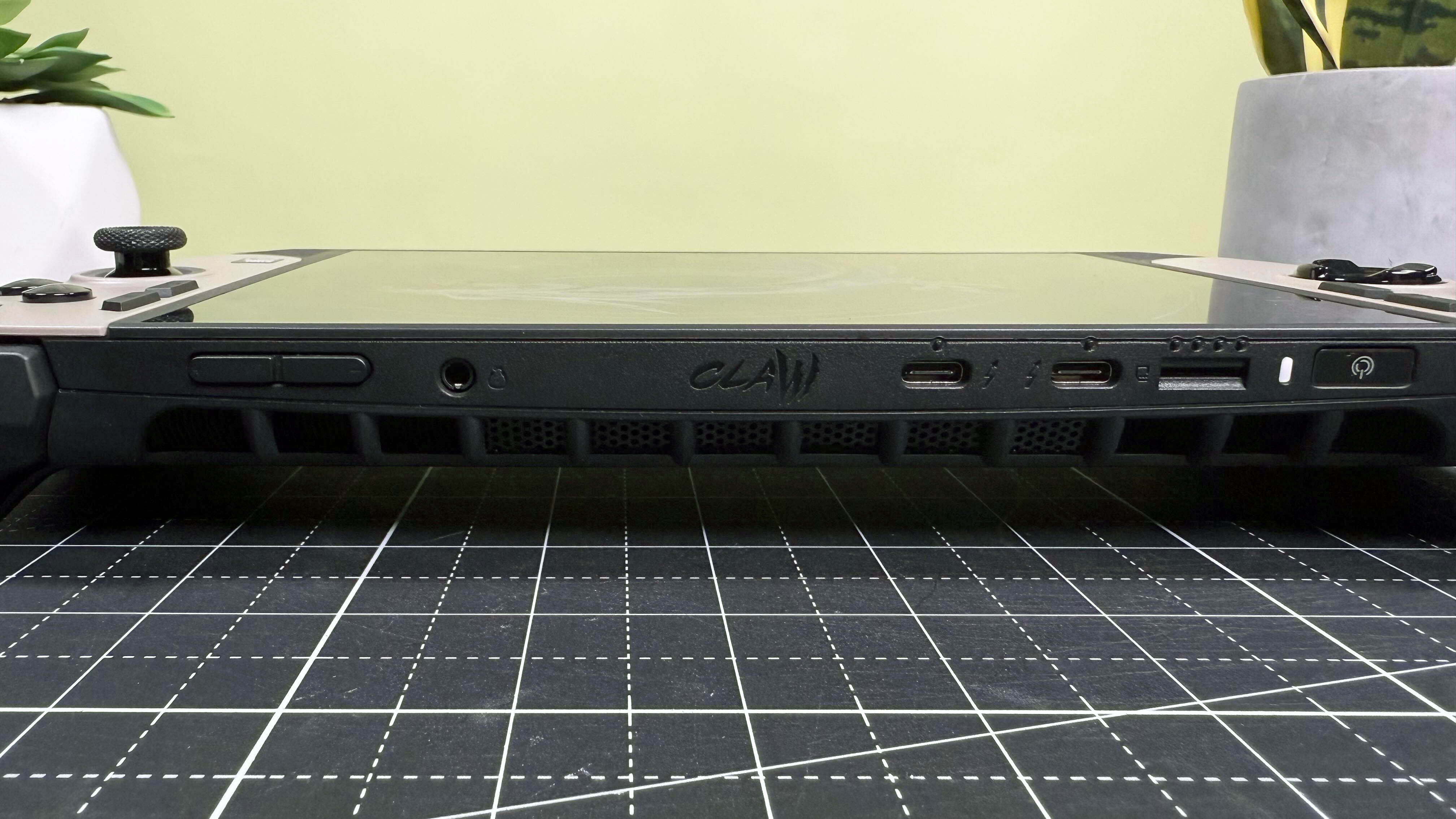
Specifications
Reasons to buy
Reasons to avoid
MSI Claw 8 AI+ blew our minds in how it fixed the mistakes of its predecessor (The MSI Claw) and is now, by far, the longest lasting handheld gaming PC in the market.
✔️ You want the longest last handheld gaming PC: The MSI Claw 8 AI+ is the longest lasting handheld gaming PC in both our non-gaming tests and gaming tests, coming in at over 13 hours in the former and 3 hours in the latter.
✔️ You want tons of space and RAM: This device is packed to the brim with top-tier specs, including 2TB of SSD storage and 32GB of RAM, making it more than capable of holding as many games as you want.
✖️ You're on a budget: The MSI Claw 8 AI+ is easily the most premium choice in this list, with the model we reviewed coming in at $899.
✖️ You want something light: At 1.75 pounds, the MSI Claw 8 AI+ is pretty hefty and isn't a great idea for users who are looking for a lighter machine.
The MSI Claw 8 AI+ exceeded expectations after the original MSI Claw received a dismal 2.5 out of 5 stars in our review. But the company's latest handheld gaming PC delivers in nearly every avenue.
It is designed for the most premium handheld gaming experience, built with 2TB of SSD storage, 32GB of RAM, and an Intel Core Ultra 7 258V processor with Intel Arc 140V integrated graphics. It also has an 8-inch, 1,920 x 1,200-pixel resolution IPS touchscreen at a 120Hz refresh rate.
Its most impressive quality is its battery life. On the Laptop Mag battery life test, which involves continuous web surfing over wifi at 150 nits, the MSI Claw 8 AI+ lasted 13 hours and 31 minutes before running out of juice. For context, that's more than double the original Claw's battery life of 6 hours and 9 minutes. And the Asus ROG Ally X, which is the second longest, lasted 8 hours and 19 minutes.
On our PCMark 10 gaming battery life benchmark, it also did remarkably well, but it's clear that the Intel Core Ultra 7 258V's efficiency isn't as amazing when gaming, but it still did the best of its competitors. It lasted 3 hours and 6 minutes before running out of juice. The Asus ROG Ally X, which was stomped in the non-gaming battery life test, was only two minutes behind at 3 hours and 4 minutes before dying.
Its display and brightness are both solid, coming in at 80% coverage of the DCI-P3 color gamut and 473 nits of brightness. While it's not as bright as the ROG Ally X's 523 nits, it's equally as colorful, with both at 80% DCI-P3.
The MSI Claw 8 AI+ also does excellently in our gaming tests with its Intel Core Ultra 7 258V processor and Intel Arc 140V integrated graphics. On the 3DMark Fire Strike benchmark, the Claw 8 AI+ achieved a score of 2243, while the Ally X was a bit behind at 2090 with its Ryzen Z1 Extreme processor and Radeon 780M GPU. That's not particularly surprising, considering the Ally X's chip is older.
See our full MSI Claw 8 AI+
Best screen in a handheld gaming PC
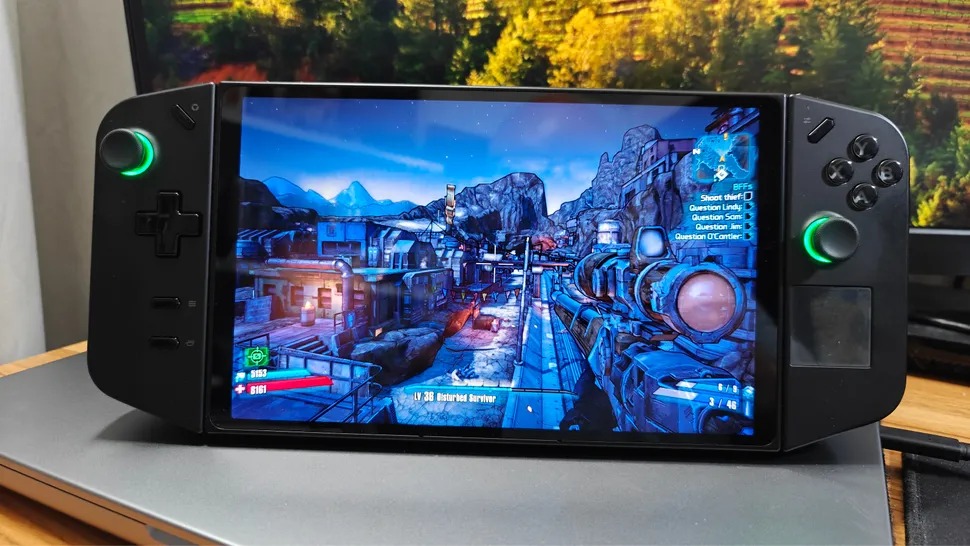


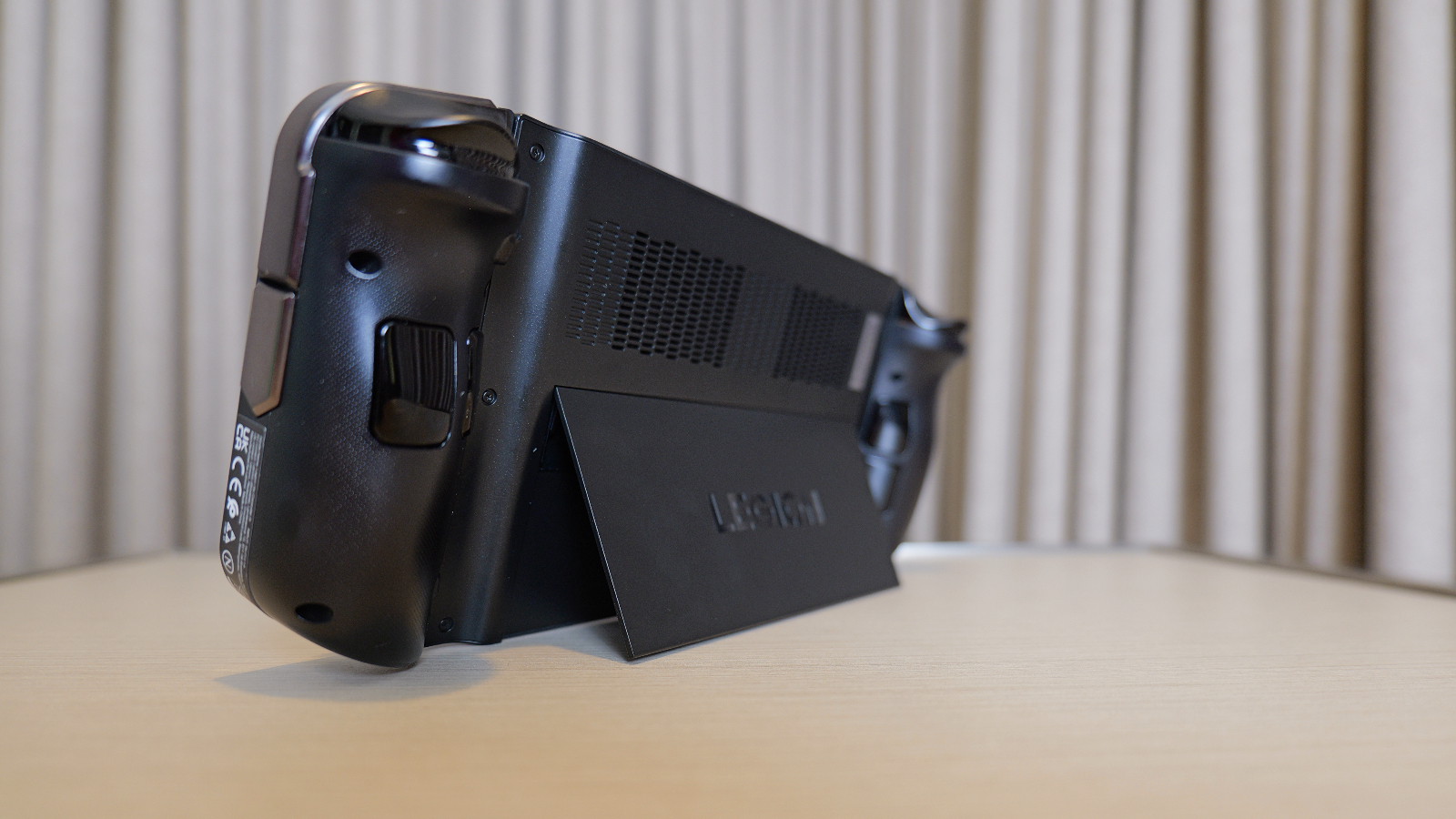
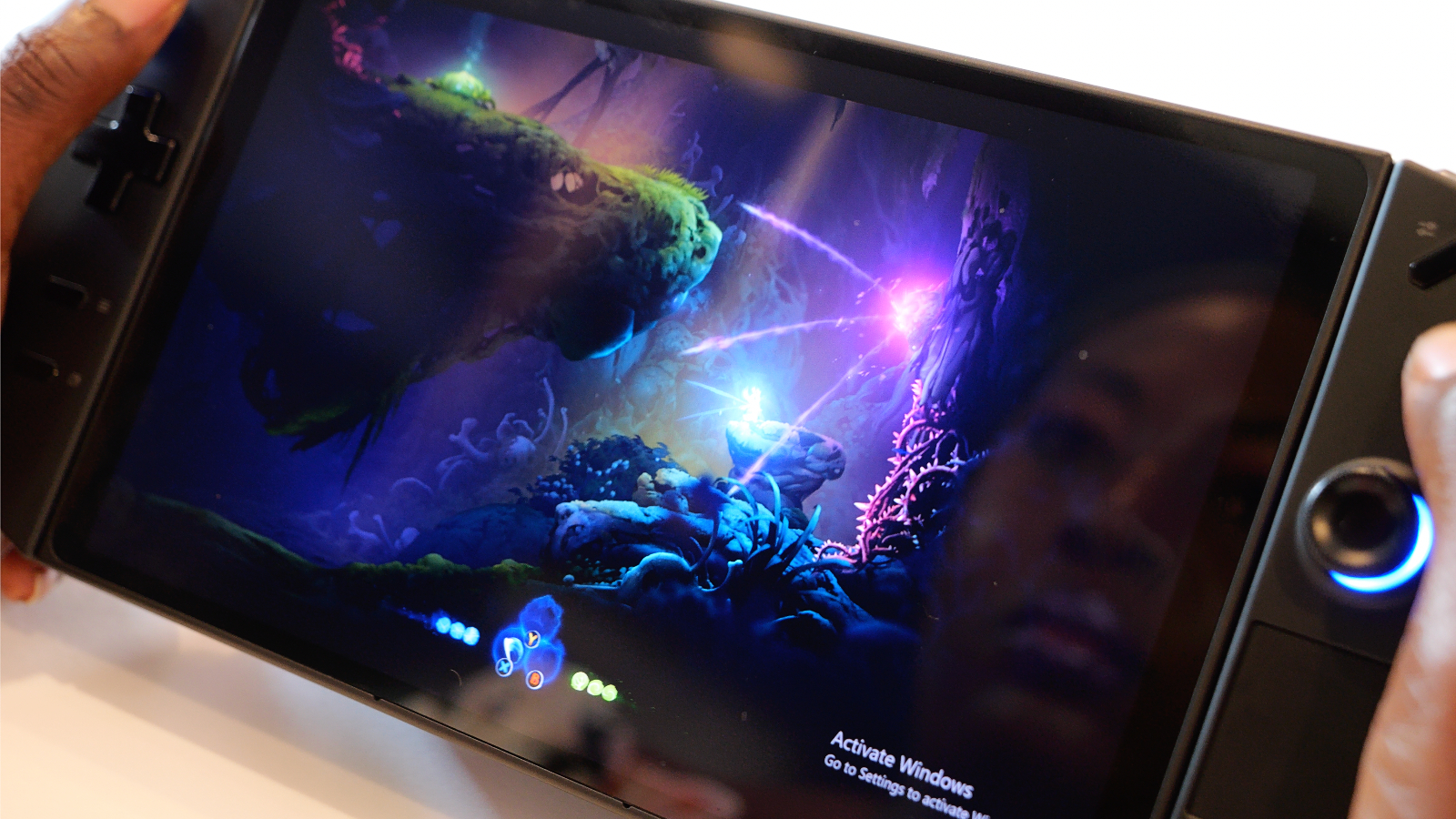
Specifications
Reasons to buy
Reasons to avoid
Lenovo Legion Go is the most impressive display of the bunch in every avenue, whether it be color, brightness, resolution, or refresh rate. If you're a sucker for greatg displays, this handheld has you covered.
✔️ You want the best display in a handheld device: This 8.8-inch, 2,560 x 1,600p IPS touchscreen at 144Hz is gorgeous, at 477 nits of brightness and 108% DCI-P3 color gamut coverage.
✔️ You like your handhelds large: Easily the largest (and heaviest) handheld on this list, the Lenovo Legion Go comes in at 8.8-inches and is perfect if you're a sucker for big displays. It's also nearly 2 pounds, so prepare for a heavy machine.
✖️ You're on a budget: You're not going to find this for cheap, as it's one of the higher end handheld gaming PCs.
✖️ You don't care for detachable controllers: The Lenovo Legion Go's detachable controllers are definitely cool, but if your'e like me and aren't the type of person who would use that feature frequently, there's no point.
The Lenovo Legion Go came shortly after the Asus ROG Ally, and it did surprisingly well with specs that had us shaking in our boots. With an 8.8-inch, 2,560 x 1,600-pixel IPS panel and detachable controllers, this has a new class of features that even the Asus ROG Ally doesn't quite have.
Alongside its already mentioned display, it's built with an AMD Ryzen Z1 Extreme processor, 16GB of RAM, and 512GB/1TB SSD for anywhere between $699 to $749. This makes its starting price somewhere in the middle between the cheapest and most expensive. While the Lenovo Legion Go is the heaviest on this list (1.88 pounds), Mark Anthony Ramirez claimed its ergonomics were excellent.
You're probably wondering: What am I losing by purchasing the Lenovo Legion Go over the Ally if they're the same price? Well, the Ally comes with a completely different controller layout, and the Legion Go lacks my beloved Armoury Crate app, which makes exploring Windows 11 on a handheld much easier.
Beyond just that, Asus is directly backed by Xbox Game Pass, making it the ideal device to use with that. Otherwise, the Lenovo Legion Go is a great pick for someone needing something larger, bigger, and higher resolution.
Most importantly, however, its display is phenomenal. Boasting a DCI-P3 color gamut coverage of 108% and nits of brightness at 476. It's bright, colorful, and with a 2K resolution at 144Hz refresh rate, it is by far the best display on any handheld gaming PC.
See our full Lenovo Legion Go review.
Best handheld gaming PC for emulation
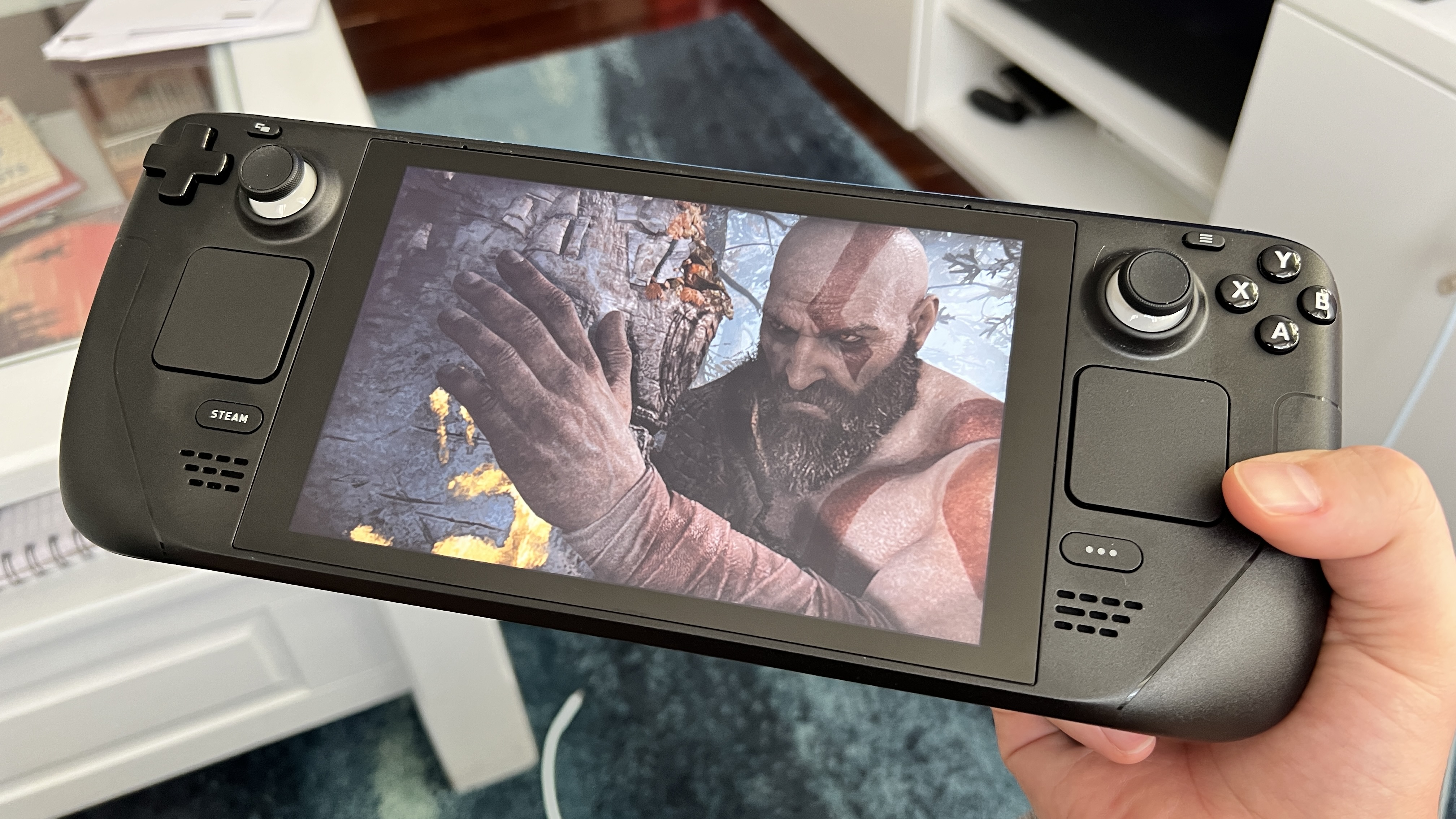

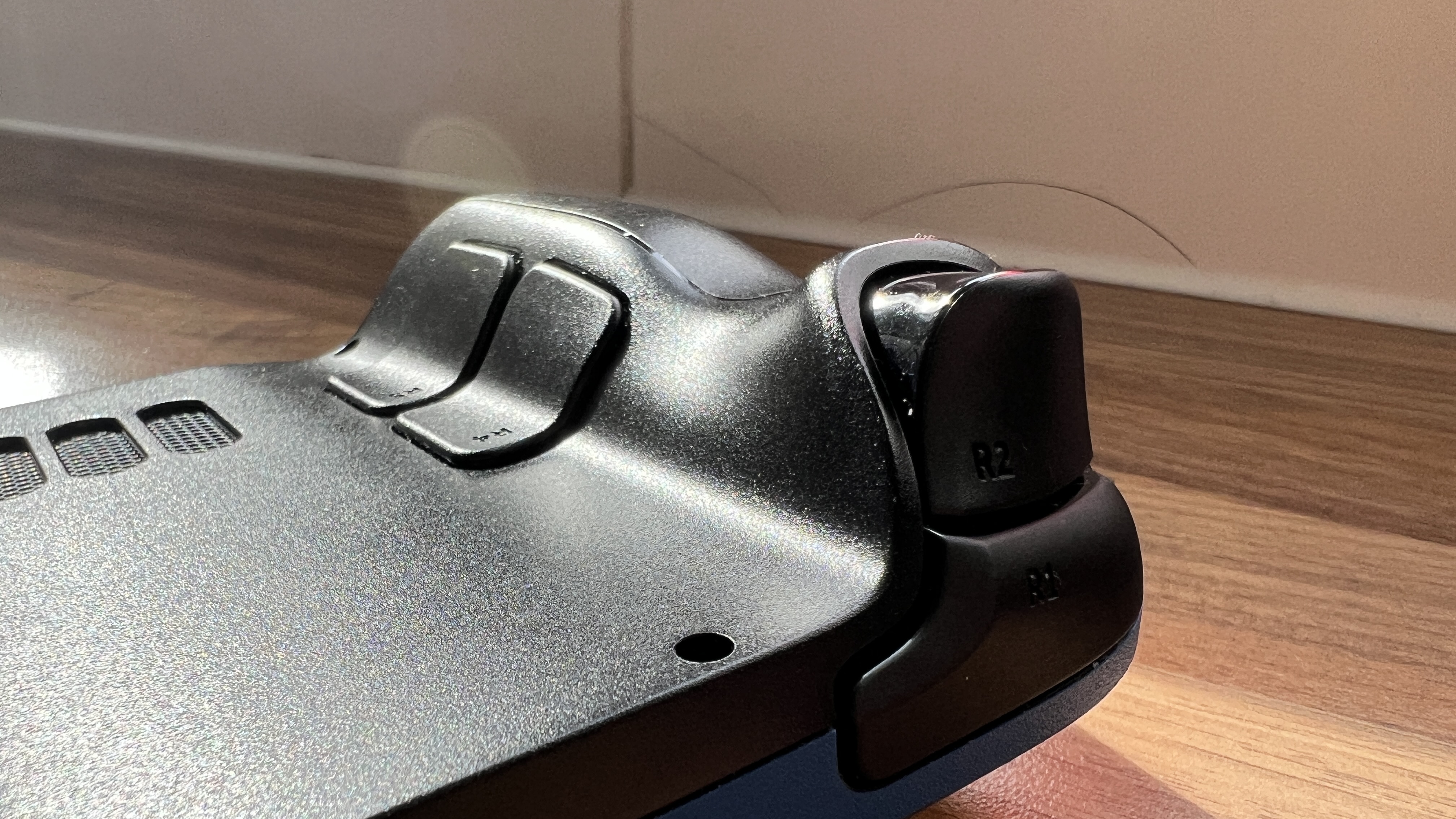
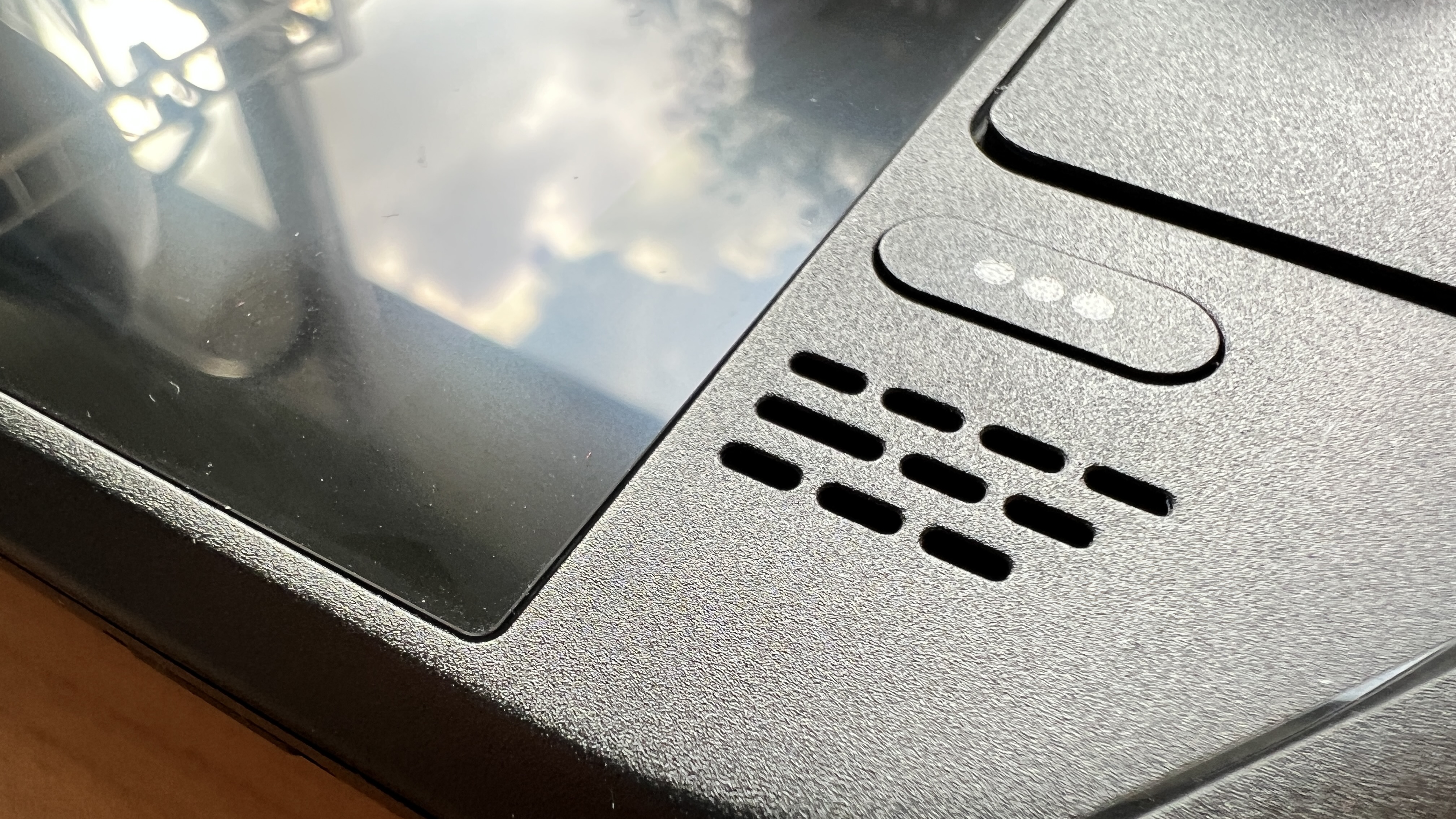
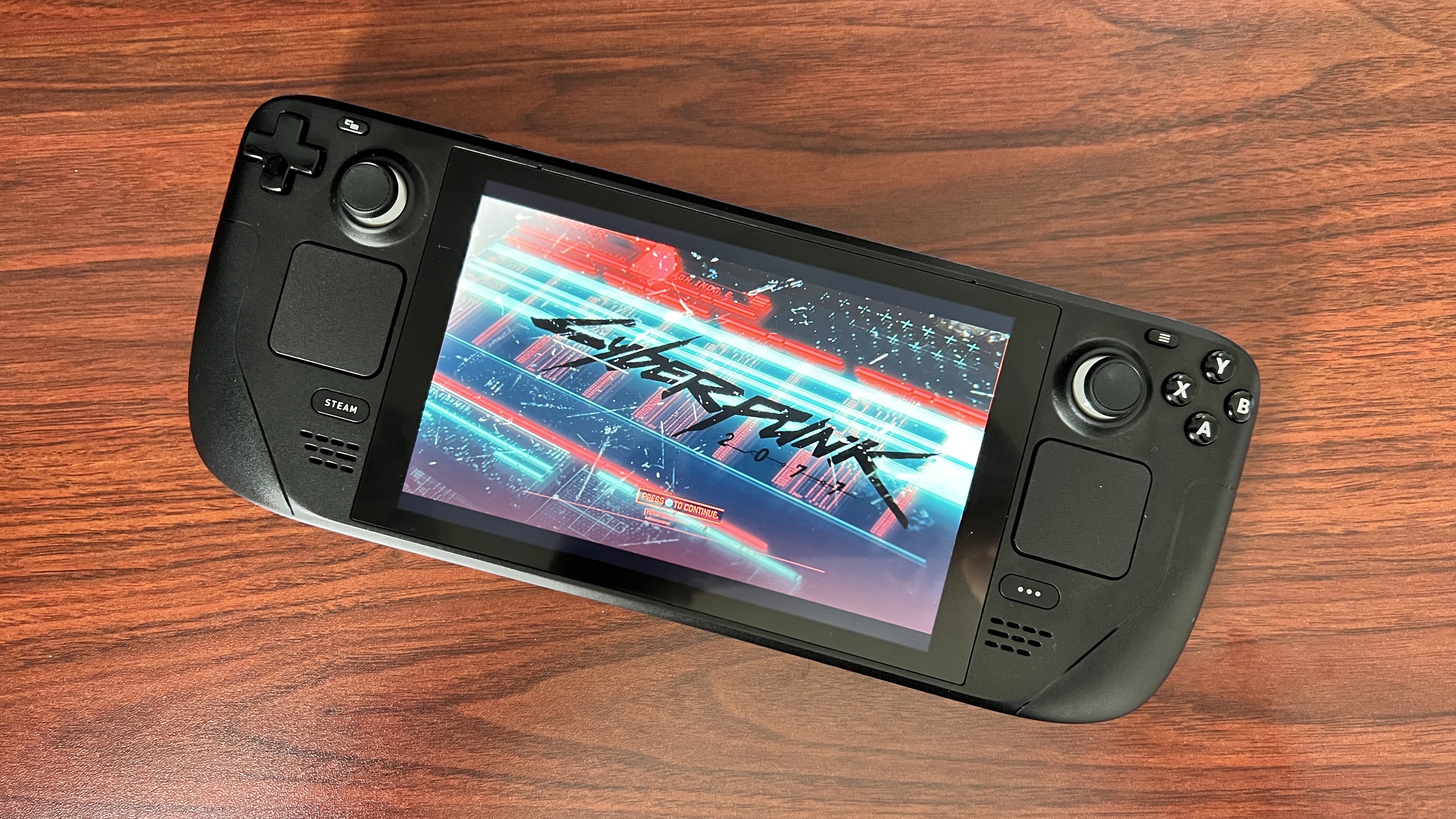
Specifications
Reasons to buy
Reasons to avoid
The Steam Deck OLED is excellent for emulation thanks to third-party software that is relatively easy to set up, and once it is, the user experience is significantly more convenient than any emulation experience you could have on a competing Windows machine.
✔️ You're primarily a Steam user: If you're a gamer whose library is entirely on Steam, you will love the Steam Deck, as its lite Linux-based SteamOS offers excellent performance, and many games are tested and verified for SteamOS use.
✔️ You want trackpads on your machine: If you weren't aware, the Steam Deck has one small track pad on both sides of the device. It can be used to emulate a mouse, and while not everyone uses them, it can be vital for certain games that need mouse input.
✖️ Your games library is scattered: Nowadays, we have games through Xbox Game Pass, GOG, Epic Games, and far more. If you want a handheld that can seamlessly download applications, buy a Windows handheld.
✖️ You want long-lasting battery life: We got less than an hour of battery life from the Steam Deck while playing Cyberpunk 2077, which is dismal compared to what competing machines have done recently.
The Steam Deck is the first handheld gaming PC that allowed users to get lost in their Steam library on the go. While it's not a Windows PC, SteamOS is built upon Linux, which means users have found ways to do things like get emulators working through EmuDeck.
This is perfect for people who already own tons of games on Steam and want a more convenient way to enjoy that content. We wouldn't necessarily recommend it to folks who don't have a Steam account unless you're willing to begin a whole new library from scratch.
Our reviewer, Jason England, complimented its ergonomics that "slips into your hand's grip with ease," he also pointed out that its heaviness (1.4-1.5 pounds) gave him wrist ache after long gaming sessions.
The Steam Deck LCD model has been heavily discounted due to the launch of the OLED version. However, we haven't reviewed this specific model just yet. You can get the Steam Deck OLED starting at $549, and while its most notable upgrade involves its jump from LCD to OLED, it also goes from 60Hz to 90Hz refresh rate, 7.0 to 7.4-inch screen size, and a 40Whr to 50Whr battery. The lowest-cost model has 512GB of storage space and a 7.6-inch, 1,280 x 8,00 OLED display.
If OLED doesn't appeal to you, we recommend one of the 7-inch 1,280 x 800-pixel LCD models. While the cheapest is 64GB for $349, that's far too little space for most people, so we recommend the 256GB for $399. If that's still too little, the 512GB model is $449 right now. Steam is only selling these until supplies last, as the OLED models are set to become the new base skew, so if you want one, now's the best time to grab it.
See our full Steam Deck review.
Benchmark comparisons
Click to view chart data in table format
| Header Cell - Column 0 | Asus ROG Ally X | Asus ROG Ally | MSI Claw 8 AI+ | Lenovo Legion Go | Steam Deck OLED |
|---|---|---|---|---|---|
Battery life - Web Surfing (Higher is better, HH.MM) | 08:19 | 3.01 | 13:31 | 04:06 | 5.03 |
Battery life - Gaming (Higher is better, HH.MM) | 03:04 | 0.47 | 3:06 | 01:59 | Row 1 - Cell 5 |
Display brightness (Higher is better) | 523 | 465 | 473 | 477 | 597 |
sRGB color gamut (Higher is better) | 112.7% | 109% | 113.6% | 151.8% | 143.7% |
DCI-P3 color gamut (Higher is better) | 79.8% | 77% | 80.4% | 107.5% | 101.8% |
Color accuracy (Lower is better) | 0.36 | 0.17 | 0.32 | 0.21 | 0.22 |
3DMark Fire Strike Ultra (Higher is better) | 2,090 | 2133 | 2,243 | 1,723 | Row 6 - Cell 5 |
Assassin's Creed: Mirage (1080p, fps) | 23 | Row 7 - Cell 2 | 30 | 17 | Row 7 - Cell 5 |
Borderlands 3 (1080p, fps) | 22.76 | 23.02 | 28.8 | 21.15 | Row 8 - Cell 5 |
Cyberpunk 2077 (720p, fps) | 9.76 | Row 9 - Cell 2 | 14.72 | Row 9 - Cell 4 | 23.34 |
DiRT 5 (720p, fps) | 30.5 | Row 10 - Cell 2 | 37.9 | Row 10 - Cell 4 | 23.77 |
Red Dead Redemption II (Medium, 1080p, fps) | 17.263 | 16.3221 | 20.706 | 15.6673 | Row 11 - Cell 5 |
Shadow of the Tomb Raider (720p, fps) | 36 | Row 12 - Cell 2 | 37 | Row 12 - Cell 4 | 40 |
Geekbench 6 (Higher is better) | 11,255 | 10,979 | 10,917 | 9,857 | 4,542 |
Handbrake conversion (Lower is better) | 6:45 | 4:56 | 06:34 | 9:24 | 15:20 |
25GB File Transfer Test (Lower is better) | 19.95 | 33.84 | 16.97 | 18.7 | 387.5 |
25GB File Transfer Test (SSD speed) | 1,346 | 768.9810006 | 1,582 | 1,432 | 69 |
Heat (Degrees Fahrenheit) | 83.7 | 95 | 95 | 103.5 | 111.0 |
Gaming Heat (Degrees Fahrenheit, 95 comfort threshold) | 95.4 | 115 | 96.6 | 111.5 | 103.0 |
How to find the right handheld gaming PC
I am obsessed with handheld gaming PCs, and there are a few critical factors to consider when deciding which one is right for you. Thankfully, there really is no wrong answer as long as you're not buying the original MSI Claw or Lenovo Legion Go S, but let's jump into what you should be thinking about.
Budget: They're all affordable, but some are way cheaper than others
All handheld gaming PCs are pretty cheap as far as computers and laptops go. The worst you'll be spending is $899 on the MSI Claw 8 AI+, which is still thousands of dollars cheaper than many gaming laptops out there.
The cheapest you're going to get is either the Steam Deck LCD model at 256GB of storage for $399, or the base Asus ROG Ally Z1, which retails for $499, but is often available for $349 to $399 during deals season. If that sounds like an attractive price point for a capable handheld, you should absolutely go for it.
But if you're willing to invest in greater storage, RAM, processing power, and battery life, don't be afraid to purchase the more expensive models like the Asus ROG Ally X for $799 or the MSI Claw 8 AI+ for $899.
Size: Don't forget, you'll be holding this machine for hours at a time
All handheld gaming PCs are in the range of one to two pounds, but weight makes a huge difference. You cannot forget that when gaming on a handheld device, you will be holding it in your hands for hours at a time, especially if you're as intense of a gamer as I am.
Lighter, smaller machines like the Asus ROG Ally are 7 inches and only weigh 1.34 pounds, while the heavier, larger machines like the Lenovo Legion Go have an 8.8-inch display and weigh 1.88 pounds. If you're prone to hand aches and cramps, consider the smaller machine.
Operating system: Windows 11 or SteamOS?
While it may seem like a small choice, the decision between Windows 11 and SteamOS is a huge one, and each has its advantages and disadvantages.
SteamOS has fantastic user-friendliness and is generally an amazing experience in navigation and ease of use. Windows 11, on the other hand, benefits from its wide selection of applications. SteamOS users are limited to their Steam library, but Windows 11 is an absolute headache to control on a gaming handheld.
The question comes down to this: Do you value convenience over choice? If your answer is convenience, pick SteamOS. If you prefer more choices, pick Windows 11.
Battery Life: Are you going to be tethered or not?
Longevity for handheld gaming PCs varies greatly. Some machines last a long time with an 80Wh battery (like the MSI Claw 8 AI+), while others die in less than half the time with their 40Wh battery (like the Asus ROG Ally).
But that isn't a universal negative. You might think a gaming handheld must be associated with great battery life, but that depends entirely on your use case. I only use my gaming handheld at home, and I'm usually close to an outlet, even when I'm in bed. While that additional juice is definitely welcome, it's not the end of the world if the machine dies fast, as I just have to plug it in.
However, if you make full use of a handheld's portability and take it with you while traveling, you will regret not investing in a machine with a longer battery life.
FAQs
Can I play AAA games on a handheld gaming PC?
If your primary use case for a handheld gaming PC like the Asus ROG Ally or MSI Claw 8 AI+ is to enjoy AAA games like Cyberpunk 2077, Monster Hunter Wilds, Metaphor: ReFantazio, Alan Wake 2, and more, you have to be prepared to make serious sacrifices.
Many of these games will run, but likely at lower graphical settings, and you might not get the best framerate out of them. Handheld gaming PCs are best when primarily used for emulation and indie games, with the occasional AAA game if you wish. I've played a bit of Elden Ring on my Asus ROG Ally X, and it runs well, but I don't frequently play AAA titles on the device. If you do, we recommend something stronger, like a gaming laptop or PC with discrete graphics.
Can I play PS5 or Xbox games on a handheld gaming PC?
Many Xbox games are available on PC, including Halo Infinite, Indiana Jones and the Great Circle, Sea of Thieves, Hi-Fi Rush, Avowed, and far more. They're all playable through the Xbox app, and some are even available on Steam.
PS5 games are a bit trickier. Sony continues to port the occasional PlayStation exclusive to PC, with games like Sackboy: A Big Adventure, God of War: Ragnarok, Marvel's Spider-Man 2, Returnal, and Ratchet & Clank: Rift Apart. However, these aren't available universally on PC, as Sony usually waits at least a year, and sometimes multiple years, before porting a title over. Beyond just that, not every PS5 exclusive is guaranteed to appear on PC.
Why is handheld gaming better?
Handheld gaming has its pros and cons but a lot of gamers consider it better than gaming on a desktop, laptop, or console since you're not tied down to one spot. You can bring your games with you wherever you need to go, whether it's your commute, school, vacation, or anywhere else.
That portability can be a huge advantage. While gaming laptops are technically portable, too, they're significantly heavier and bulkier than a handheld gaming PC.
Plus, sometimes it's just nice to curl up on the couch or in bed to do a little gaming on your handheld gaming PC, which isn't nearly as comfortable with a gaming laptop.
What rumored handheld gaming PCs are we excited for?
The most highly-anticipated upcoming handheld gaming PC at the time of writing is the Steam Deck 2. While it has not been officially announced yet, there have been plenty of rumors about it, indicating that it could launch sometime in 2026 or 2027.
While that's a bit far off, we're also looking forward to the SteamOS version of the Lenovo Legion Go S, slated to launch in May 2025. The Windows version was disappointing, so we're hoping the SteamOS version performs a bit better, especially since it's also expected to be less expensive than the Windows version.
How We Test the Best handheld gaming PCs
When we bring a handheld gaming PC into our laboratory, we aim to see how it can game and the general performance of its specs. While we use industry-standard benchmarks such as Geekbench and 3DMark, we focus heavily on real-world tests that we have developed in-house.
To test endurance, the Laptop Mag Battery test surfs the web at 150 nits of brightness until the system runs out of juice. We also utilize the PCMark 10 gaming battery life benchmark to see how long the machine lasts while gaming.
We use a giant spreadsheet macro that matches 65,000 names with their addresses to judge pure processing power, a video transcoder that converts a 4K video to 1080p, and the Geekbench 5/6 synthetic test.
We ramp up our 3DMark testing to also include Fire Strike Ultra and Time Spy Extreme, which determine how well the handheld gaming PC copes with DX11 and DX12 4K graphics workloads.
We run all gaming benchmarks in full-screen mode with vertical sync disabled, always at least at 1920 x 1080 (1080p) resolution, with some games at 1,280 x 720 (720p) to test against the Steam Deck's native resolution. Games include: Red Dead Redemption 2, Assassin's Creed Mirage, Shadow of the Tomb Raider, Borderlands 3, Far Cry 6, and more.
We use a colorimeter to measure screen brightness and color gamut, which is important, especially when bringing one of these devices on the go.
We think about how well a handheld gaming PC's price point matches what it offers. Expensive is only a problem when it's not worth the cost, and while all of these machines are cheaper than most gaming PCs or gaming laptops, we want to ensure what you're paying for is worth it.
Beyond all the lab tests, our reviewers need to go deep into a handheld gaming PC's ergonomics. If you're going to be holding one for hours on end, you need to know how it feels and whether or not you'll get tired of holding it, alongside how well the buttons and grip are designed. Considering how vital software can be, our reviewers thoroughly explore the user experience from gaming to navigating the operating system. This ensures we're not just measuring a device's performance but how it feels to use it day-to-day.
Why Trust Laptop Mag
Laptop Mag reviews over one hundred different laptops every year, from paperweight ultralights to everyday workhorses to lumbering gaming notebooks that scorch the frame rates of even the hottest AAA games. We're not just experts in the laptop field, as we go one step further by meticulously testing smartphones, tablets, headphones, PC accessories, software, and even handheld gaming PCs.
We are 100% independent and have decades of experience to help you buy with confidence. In fact, Laptop Mag has been testing and reviewing products for three decades, and we continue to deliver trustworthy reviews you can rely on.
Our experienced team of writers and editors scour the available information about the laptop and put it through its paces to determine which is best for you. But before they start, the testing team subjects each system to a rigorous regimen of synthetic and real-world tests to see how a system handles the type of work and games you’re most likely to throw at it.
Our editorial trustworthiness is enforced by one of the world's largest technology publishers, Future Publishing. As a company, we have unrivaled experience across every tech sector — and we're the group's specialist for all things mobile tech.
Sign up to receive The Snapshot, a free special dispatch from Laptop Mag, in your inbox.

Stevie Bonifield is a freelance tech journalist who has written for PC Gamer, Tom's Guide, and Laptop Mag on everything from gaming to smartwatches. Outside of writing, Stevie loves indie games, TTRPGs, and building way too many custom keyboards.
- Claire TabariStaff Writer
